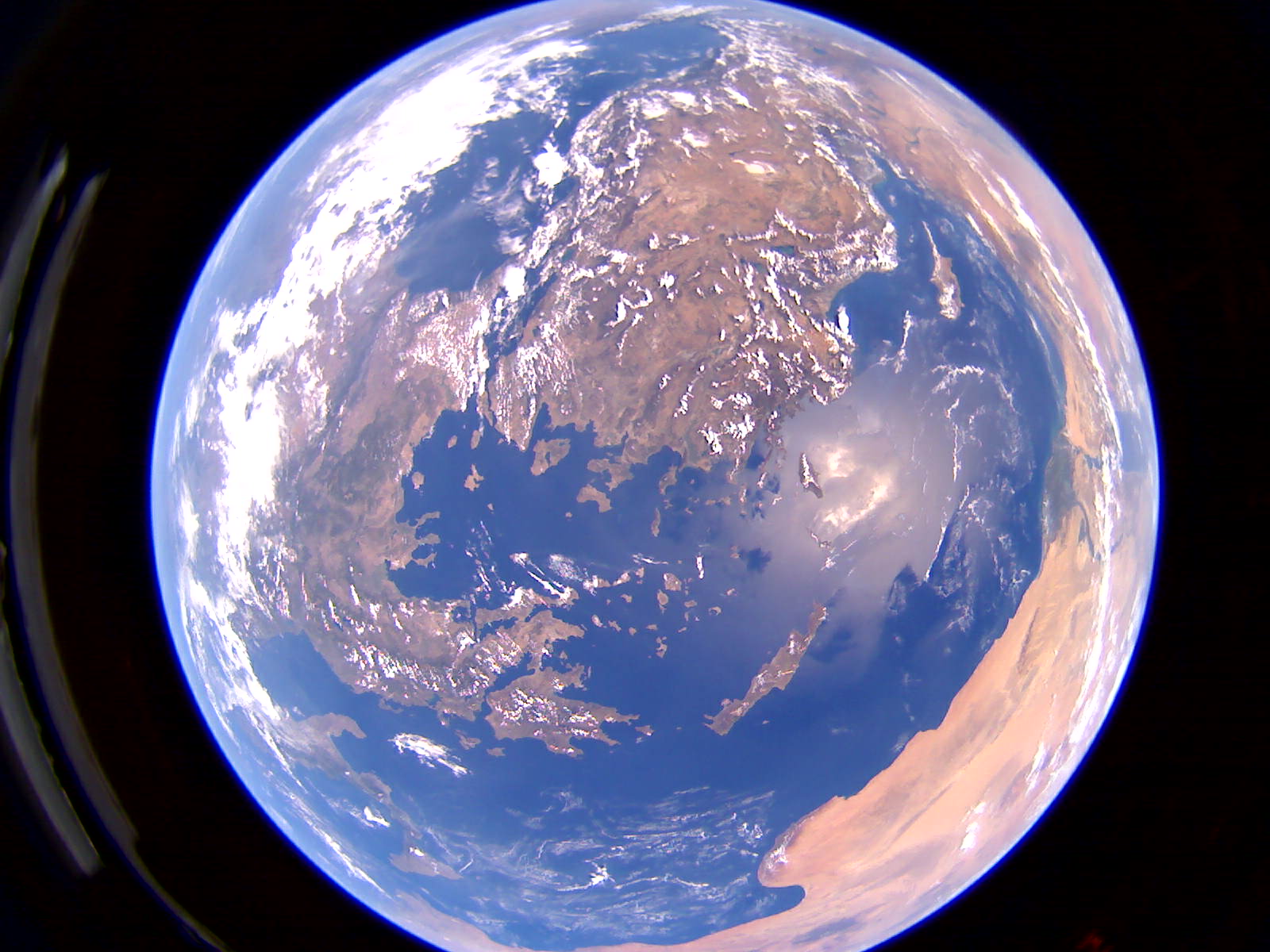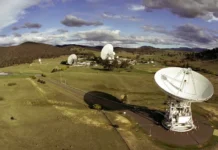NASA’s Pathfinding Technology Demonstrator-4: A Leap Forward in Spacecraft Power and Communication
In a significant stride towards advancing space exploration technology, NASA has recently assessed the initial flight data and imagery from the Pathfinder Technology Demonstrator-4 (PTD-4) mission. This evaluation confirmed that the spacecraft’s systems, including its onboard electronics and support systems like a small camera, are functioning correctly. A notable achievement from this mission is a test image of Earth captured by the payload camera soon after PTD-4 entered orbit. This camera will continue to document the technology demonstration throughout the mission, providing valuable insights.
The primary goal of the PTD-4 mission is to demonstrate new power and communication technology for future spacecraft. The mission’s payload features a deployable solar array integrated with an antenna known as the Lightweight Integrated Solar Array and anTenna, or LISA-T. The deployment of its central boom structure has already begun. This boom supports four solar power and communication arrays, also referred to as petals. When the central boom is released, it pushes the stowed petals nearly three feet (one meter) away from the main spacecraft body. Currently, the mission team is addressing an initial challenge to fully extend LISA-T’s central boom before the petals unfold to commence power generation and communication operations.
Small spacecraft venturing into deep space missions require more electrical power than what current technologies provide. LISA-T’s four-petal solar array is a thin-film solar array that delivers lower mass, reduced stowed volume, and three times more power per mass and volume allocation compared to existing solar arrays. The in-orbit technology demonstration focuses on the deployment, operation, and environmental resilience of this thin-film solar array.
Dr. John Carr, deputy center chief technologist at NASA’s Marshall Space Flight Center in Huntsville, Alabama, remarked, "The LISA-T experiment is an opportunity for NASA and the small spacecraft community to advance the packaging, deployment, and operation of thin-film, fully flexible solar and antenna arrays in space. These thin-film arrays will significantly enhance power generation and communication capabilities across various mission applications." He emphasized that these capabilities are crucial for conducting higher value scientific research while exploring deep space with small spacecraft.
The Pathfinder Technology Demonstration series leverages a commercial platform to test innovative technologies that enhance the capability of small spacecraft. Deploying LISA-T’s thin solar array in the harsh environment of space presents inherent challenges, such as deploying large, highly flexible non-metallic structures with high area-to-mass ratios. By conducting experiments like LISA-T on a smaller, cost-effective spacecraft, NASA can take manageable risks with a high probability of significant returns. The LISA-T experiment aims to enable future deep space missions by improving power generation and communication capabilities within the same integrated array.
The PTD-4 small spacecraft hosts the in-orbit technology demonstration known as LISA-T. The spacecraft was deployed into low Earth orbit from SpaceX’s Transporter-11 rocket, which launched from Space Launch Complex 4E at Vandenberg Space Force Base in California on August 16. NASA’s Marshall Space Flight Center in Huntsville, Alabama, designed and developed the LISA-T technology and its supporting avionics system. NASA’s Small Spacecraft Technology program, based at NASA’s Ames Research Center in California’s Silicon Valley and led by the agency’s Space Technology Mission Directorate, funds and manages the PTD-4 mission as part of the overall Pathfinder Technology Demonstration mission series. Terran Orbital Corporation of Irvine, California, developed and built the PTD-4 spacecraft bus, named Triumph.
Understanding LISA-T Technology
NASA teams are currently testing a critical technology demonstration known as LISA-T, which stands for Lightweight Integrated Solar Array and anTenna. This advanced system is a super compact, stowable, thin-film solar array that, when fully deployed in space, provides both power generation and communication capabilities for small spacecraft. The orbital flight test of LISA-T is part of the Pathfinder Technology Demonstrator series of missions.
To venture farther into deep space, small spacecraft need more electrical power than what existing technologies can offer. LISA-T seeks to address this demand by providing small spacecraft with access to power without compromising their mass or volume. This development is crucial as it allows for more efficient and capable missions without the need for larger spacecraft.
The Significance of LISA-T for Future Missions
The LISA-T experiment has the potential to revolutionize how small spacecraft operate in space. By integrating power generation and communication capabilities into one compact system, LISA-T offers a streamlined solution that can support a wide range of mission applications. This innovation is especially significant for missions that aim to explore deep space, as it provides a reliable source of power and communication without adding significant mass or volume.
Additionally, the successful demonstration of LISA-T technology could lead to further advancements in the design and operation of small spacecraft. By proving the viability of thin-film solar arrays and integrated antenna systems, NASA can pave the way for future missions to utilize these technologies, ultimately enhancing the overall capabilities of small spacecraft in space exploration.
Reactions and Reviews
The successful deployment and operation of LISA-T have garnered positive reactions from the scientific and space exploration communities. Experts have praised the innovation, citing its potential to significantly enhance the capabilities of small spacecraft. The ability to generate more power and maintain communication in deep space is a critical factor that could lead to groundbreaking discoveries and advancements in space exploration.
Moreover, the LISA-T experiment exemplifies NASA’s commitment to pushing the boundaries of technology and exploring new possibilities in space exploration. By investing in innovative solutions like LISA-T, NASA is not only advancing its mission objectives but also contributing to the broader field of space technology, enabling future missions to achieve unprecedented success.
Conclusion
In conclusion, the Pathfinder Technology Demonstrator-4 mission, featuring the LISA-T experiment, represents a significant milestone in the advancement of space exploration technology. By successfully integrating power generation and communication capabilities into a compact, thin-film solar array, NASA is paving the way for more efficient and capable small spacecraft. This innovation holds immense potential for future missions, enabling them to explore deeper into space and achieve higher value scientific research.
As the LISA-T experiment continues to demonstrate its capabilities in space, it serves as a testament to NASA’s dedication to innovation and progress in space exploration. The insights gained from this mission will undoubtedly shape the future of small spacecraft technology, opening new doors for exploration and discovery in the vast expanse of space.
For more Information, Refer to this article.


































